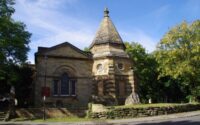What’s on : Activities
Event Information
Tuesday 28th February by private car
Cost £6 per person
“Earthleatham” will be a geologically flavoured day-trip to Kirkleatham Museum and village, led by palaeontologist Dr Liam Herringshaw. We will take a walk around the village, which hosts a remarkable number of listed buildings, and hear how geology has played a crucial role in its long and fascinating history. We will also have an opportunity to visit the wonderful Kirkleatham Museum and learn more about the archaeology, local history, and industrial heritage of the area.
Meet – 10.30am at Kirkleatham Museum car park (free parking):
Morning – a 90-minute stroll around Kirkleatham, led by Dr Liam Herringshaw, exploring the 200-million-year history of the village. Highlights include:
- Sir William Turner’s Almshouses, designed 350 years ago by a pioneering palaeontological architect.
https://sirwilliamturner.org.uk/schools/sir-william-turner-s-almshouses,
- Kirkleatham Walled Garden: https://kirkleathamwalledgarden.co.uk/.
- St Cuthbert’s Church & the Turner Mausoleum featuring some remarkable local building stones. https://www.achurchnearyou.com/church/19254/page/15983/view
12.30pm, Lunch – Kirkleatham Museum café: https://www.cafekirkleathammuseum.co.uk/
Afternoon – 2pm: visit Kirkleatham Museum (free entry). A chance to see the new exhibition ‘Megaliths’ https://redcarcleveland.co.uk/enjoy/kirkleatham-museum-exhibitions/
along with permanent displays on ‘Steel Stories’, the pioneering archaeologist Gertrude Bell, and the ‘Saxon Princess’ 7th Century treasures from Loftus.
In the event of very poor morning weather, we can reverse the itinerary, and visit the museum in the morning, and do the walk after lunch.
Parking – Kirkleatham Museum has free all-day parking. In the very unlikely event that all spaces are taken, free parking is also available at Kirkleatham Walled Garden.
To book, please return the booking form below to the Lodge with your cheque, made out to Yorkshire Philosophical Society (in full) or send the form by email to info@ypsyork.org and pay by Paypal at https://www.ypsyork.org/donate-to-yps/
You can download this form as a Word document by clicking here:-Kirkleatham_Flyer v2PT
YPS terms and conditions apply. See the website https://www.ypsyork.org/groups/social-group/yps-activities-booking-terms-conditions-2/ or ask at the Lodge
…………………………………………………………………………………………………………………………
Member’s Report
Liam Herringshaw led a group of 23 around the buildings of Kirkleatham outlining the archaeology, local history and industrial heritage of the area.The village sits at the foot of the Cleveland Hills and was owned by the Percy family at the time of the Domesday Book.
What we found surprised even those who had lived in nearby towns. It is difficult to improve on the quotation from Jane Grenville in Pevsner’s ‘The North Riding’:
A near perfect c18 ensemble of fine architecture, Kirkleatham is a jewel-like rural survival, a remarkable  collection of buildings that must still excite every visitor, in the sea of industrialization and c20 and c21 housing between Redcar and Middlesbrough.
collection of buildings that must still excite every visitor, in the sea of industrialization and c20 and c21 housing between Redcar and Middlesbrough.
We met in showery weather by the modern Bellamy Pavilion of Kirkleatham Museum which houses an exhibition of paintings and photographs ‘Megaliths’, a café and toilets. The Old Hall Museum was built in interesting sandstone and brick as a Free School in 1709 by Cholmley Turner and has a grand doorway with rustication, giant pilasters and a segmental pediment.
Walking past the three elegant and spacious ranges of Turner’s Hospital, almshouses for ten each of men, women, boys and girls, the buildings and chapel could be viewed through the gates. It was built by Cholmley’s uncle, William in 1676 and largely rebuilt by Cholmley in 1742. The stone Chapel reportedly has a Wren-style Byzantine interior by James Gibbs, but is not easy to access.
We visited St Cuthbert’s Church, guided by the churchwarden. The medieval church has gone, pulled down in 1761 and replaced by a Georgian-era Palladian style, designed by John Carr. Tall colonnaded arcades, a great Venetian east window with striking stained glass, an elegant font of white and green marble and a c14 iron-bound chest left over from the time of the college of priests based in Kirkleatham.
More striking is the large mausoleum of 1740, by James Gibbs, to which the ‘new’ church was attached and built for Marwood Turner, Cholmley’s son, who died on the Grand Tour, aged 21. The walls inside are lined with statues and monuments. Outside, the walls have rows of deep vermiculated rustication. These sit on courses of stones full of fossils from ancient seas but are also deeply cut through with modern piddock holes, showing they have been carefully chosen for effect and quarried at expense of time and money from some intertidal beds.
Opposite the church are the walls to Kirkleatham Hall, pulled down in the 1950s. Gate piers, the Gatehouse and Stables still remain.
Lunch was divided between the Museum Café and the recently reopened historic Walled Garden, part of the Kirkleatham Hall Estate.
The afternoon was spent looking round the exhibitions in the Museum. The Turners had originally moved to the area in the early 1600s to manage the nearby Alum works. This was the start of the development of the great chemical works in the area.
The nearby Main Seam of Cleveland Ironstone was quarried to feed local blast furnaces from the early c19 onwards and the story of the huge growth in population of Redcar and Middlesborough District through the development of Teesside steel works – and its demise – is well told within the museum. Bosanquet, the last owner of Kirkleatham Hall, was manager at the Skinningrove Iron Works. He married Esther Cleveland, ‘The Baby in the White House’.
Liam was thanked for his insights offered throughout the day and we all left planning to return.
Paul Thornley
Photo: Paul Thornley

